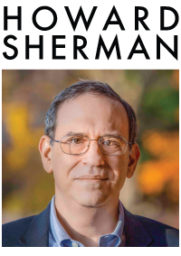The stories of troubled arts institutions abound these days: the closing of the New York City Opera, the end of Shakespeare Santa Cruz and Theater of the Stars, the year-long standoff at the Minnesota Orchestra. That’s just off the top of my head. I’m sure you can think of others.
While the steady decline of City Opera and the intractable situation in Minnesota have been fairly well reported in the arts press, they’re the exception. Typically, organizations in extremis keep their woes close to the vest as long as possible, until they’re forced to go public with what one of my former bosses called a “fire sale”: unless we raise this much by this date, we’ll have to close. Often as not, that’s just the sign that the canary in the coal mine has fallen off its perch.
Because the business of the arts is rarely covered as if it’s actual business (which it is) and because understaffed arts desks don’t have the resources to analyze and report on the fiscal health of companies on a regular basis, the ends of organizations seem precipitous and alarming. To those in the know, they’re anything but, and even when there’s an effort to assign blame, it’s rarely representative of the whole situation.
For perspective on this, I turn to Michael Crichton.
The late author specialized in a certain brand of fiction that would usually take some kernel of present day fact and extrapolate stories in which he imagined how that fact would impact us at some future date. Some of what he wrote was sci-fi (The Andromeda Strain, Jurassic Park) while some was social or cultural dynamics (Rising Sun, Disclosure); what he lacked in literary cachet he made up for in plotting and invention, even if some disliked his penchant for long asides about scientific or technological facts deployed to underpin his sometimes overheated stories.
In one of his less popular works, the mostly forgotten corporate espionage thriller Airframe, Crichton described in detail how airplanes crash. While I no longer have the book and wasn’t about to buy it again, I remember the central concept very clearly. Crichton explained that, save for an explosive device either onboard or launched at a plane, a crash doesn’t occur because of any single event. Typically, they emanate from some failure which then triggers others; Crichton notes that a swift and proper response to the inciting incident by the plane’s crew can usually avert disaster. It is when one or more of these smaller failings go unchecked that they multiply, eventually resulting in a crash. Crichton described the sequence of proliferating crises as an “event cascade.” That term has stayed with me, long after the rest of Airframe has been forgotten.
The fact is, arts organizations crash because of event cascades as well. It is rarely a single unforeseen occurrence which brings down companies; it is a series of actions, or lack thereof, that result in closure. They are of course best seen in hindsight, since boards, artistic directors and executive directors don’t have anything on their desk that will begin insistently flashing red the moment the first failing occurs. Absent such an indicator, it’s easy to overlook the first events in a cascade: the belief that consecutive operating deficits will somehow be solved at a future date; the utter conviction that a couple of seasons underperforming at the box office will be righted by some future succession of hit productions; the surety that going over-budget on a show will yield that long-sought hit; the expectation that funders will always step in insure the company’s stability for the long-term.
The lack of any alarm that goes off when bad decisions are made, decisions that often arise from from a place of passion and the very best intentions, means that arts organizations are subject to event cascades that are out of hand before anyone realizes they’re taking place. Shrewd, successful boards and staff leadership are constantly on the alert for warning signs, not out of pessimism, but from a position of cautious responsibility. Even as they do well to embrace risk in order to possibly yield the greatest achievement, they also know when steer the safest course.
Just last week, Carnegie Hall settled a stagehands strike in a matter of days (with undisclosed terms), even though it was over a matter with long-term ramifications for the company. Did they solve a problem or trigger a cascade? Time will tell. And that’s the other challenge for arts organizations: our event cascades happen in slow motion, sometimes played out over months or years, making the inciting event even harder to spot. They are only evident in retrospect, as seen by the many post-mortems that have flourished in the wake of City Opera’s closure (this one from Bloomberg News is particularly blunt). Then, of course, it’s too late.
No one dies when an arts organization goes down in flames (an oft-used metaphor), but many lives are disrupted and vital cultural resources are lost. That’s why vigilance is called for at all times on the part of everyone with operational and organizational responsibility. To use an image from a better-known Crichton creation: you can have the best containment system money can buy, but when the electricity goes out, it’s useless. And then the raptors are loose.





